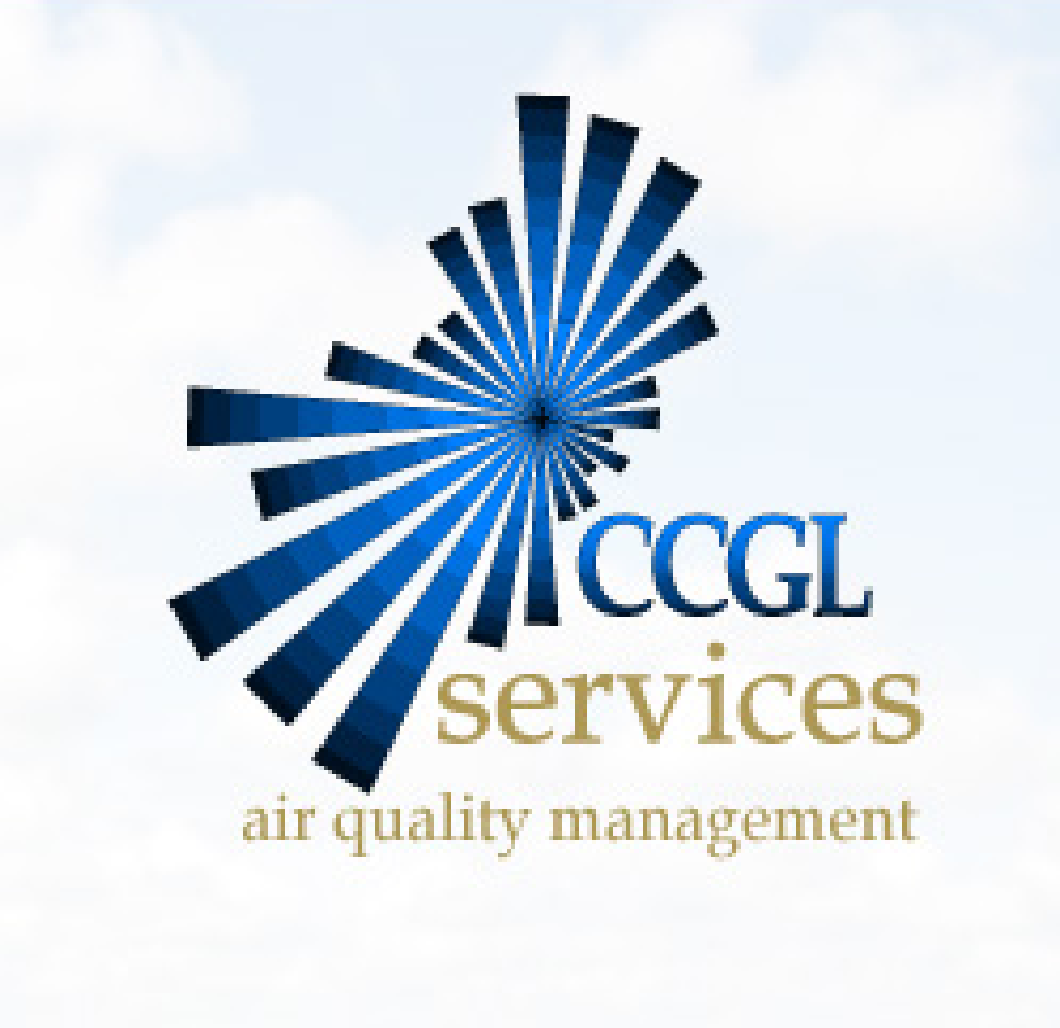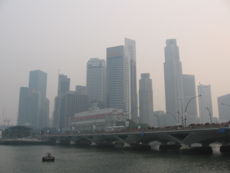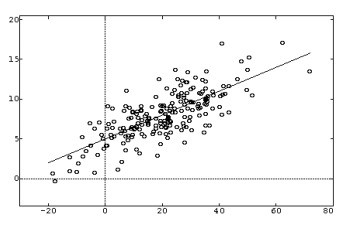- Air Homepage
- Global Warming
- Air Pollution Assessment Model
Why an Air Pollution Assessment Model Works for You
Search for more about air quality.
Why is it necessary to have an air pollution assessment model?
Air pollution models can help you predict air purity and improve your establishment's relationship with your surroundings. Innovation meets science in this endeavour. I'll explain how the models work, their precision, and their profound role in air pollution control.
You might find this interesting if you're in one of these roles:
Scientists and researchers studying air pollution might be use air pollution assessment models. Their models can help them understand and predict air pollution patterns, analyze emission sources, and assess pollution control measures. Researchers can use the model to support their research and advance science.
- Air pollution models can help government agencies manage air quality, develop environmental regulations and policies. Air pollution models can help you figure out where contaminants come from on your plant, identify what to fix first, and brainstorm other ways to reduce them
Consultants and engineers who work on air quality, environmental impact assessments, or pollution control should find air pollution assessment models useful. Models can help predict impacts, evaluate mitigation measures, and design strategies to meet regulatory requirements and minimize environmental damage.
- Those who study the health effects of air pollution and develop strategies to protect public health can benefit from learning how to use these models. These models can help assess exposure levels, identify vulnerable populations, and estimate health risks. Public health policies, interventions, and communication strategies can be informed by the model.
Industries that might sent pollutants into the air, like manufacturing, energy production and transportation, may be interested in the output from dispersion modelling. These models can help plant operators figure out where their problems are, reduce emissions, and comply with air quality rules. Businesses can use the model outputs to make informed decisions about pollution control technologies.
- Environmental advocacy groups and non-governmental organizations (NGOs) that deal with air quality and pollution probably need air modelling documentation. Influencers can identify pollution sources and raise awareness about its effects using dispersion modelling.
- People living in areas affected by air pollution may be exposed to data from relevant modelling in the media. Information obtained from using models can help the public make informed decisions about their personal exposure, lead community initiatives for the environment, and kick up a stink for policies and stuff they want.
So what is the purpose of such a model?
Depending on the weather and how much pollution cars and factories emit, air pollution varies from day to day. Sometimes it's dangerous. In many places, it's also important to monitor air quality regularly.
Several components of air pollution, like ozone, require continuous data from air quality management services.
Assessment models cover a wide range of topics, which I'll address one at a time. Here are a few key questions:
- What is an air pollution assessment model and how does it work?
- What are the key inputs and outputs of an air pollution assessment model?
- How accurate are air pollution assessment models and what are the limitations?
- How are air pollution assessment models used in policy-making and environmental regulations?
- What are the different types of air pollution assessment models and how do they differ?
- Can air pollution assessment models be used to predict future air quality and potential health impacts?
- How are air pollution assessment models validated and calibrated?
- What are some examples of air pollution assessment models being used in real-world scenarios?
- How do air pollution assessment models take into account the impact of weather and atmospheric conditions?
- Are there any emerging technologies or advancements in air pollution assessment modeling that could improve accuracy and effectiveness?
1. How does an air pollution assessment model work?
Air pollution assessment models estimate the concentration and distribution of pollutants in a specific area. To simulate pollution transport, dispersion, and chemical reactions in the atmosphere, these models use data from traffic, industry, and natural sources.
A model relies on algorithms that lay out the physics and chemistry of the atmosphere, as well as inputs like air emissions, land use, and weather. In the air and on the ground, they simulate the movement and changes in substances to estimate their concentrations.
Models can predict air pollution levels, identify pollution areas, and evaluate pollution control techniques. Furthermore, they help develop and implement wild but cheap strategies to get rid of air pollution.
2. What's the key inputs and outputs of an air pollution assessment?
An air pollution assessment model needs the following inputs:
- A list of the amount and type of pollutants released into the atmosphere by different sources, like vehicles, industries, and power plants. Information about atmospheric conditions, such as temperature, humidity, wind speed and direction, and precipitation, that affect pollution movement.
- The types of land use and the distribution of buildings, roads, and other structures that can affect pollution dispersion.
- Information about the chemical composition and reactivity of pollutants, used to simulate atmospheric chemical reactions.
An air pollution assessment includes:
- Maps that show where pollution concentrations are predicted in the atmosphere and on the ground.
- Estimates of how much pollution people are likely to be exposed to in different areas based on predicted pollution concentrations and population data.
By estimating exposures, we can better predict health problems like respiratory and cardiovascular diseases that may be caused by air quality, as well as viable solutions like cutting emissions or modifying land use.
3. How good are these models?
Depending on the model's complexity, the quality of the input data, and the specific conditions of the atmosphere being modeled, air pollution assessment models have different levels of accuracy. However, we're better off with them than without.
The problem with air pollution assessment models is that it's hard to estimate how much and what kind of pollutants are emitted by different sources. Sometimes the air changes contaminant paths in unpredictable ways. Models simplify these processes, and may not capture the complexity of real-life conditions, resulting in errors or inaccuracies.
Finally, air pollution assessment models have their limitations. They can't predict pollution levels in small, localized areas or capture short-term pollution effects. However, air pollution assessment models help us manage and reduce air pollution, as they guide our future activities and minimize health risks.
Air pollution assessment model issues
4. Air Pollution Assessment Models and the Complex Landscape of Policy-Making and Regulation?
Policies and regulations are shaped by air pollution assessment models, the behind-the-scenes heroes. Here's what happens:
Setting the Rules: Air quality dispersion models predict pollution levels and their impact on health. "Ambient air quality standards" dictate how clean our air should be based on these insights.
It's like a virtual lab, where they test different strategies, like reducing emissions from factories or changing land use. We can find the best ways to fight pollution this way.
The testers use the thought processes of evaluators, scrutinizing pollution control measures. Does it work as planned, or do we need a new approach?
Protecting the Vulnerable means these models pinpoint pollution-prone areas and groups. Our efforts to protect the most vulnerable members of the public are guided by this knowledge.
These models can be compared to Swiss Army knives for environmental protection, each tool serving a different purpose.
5. Which air pollution assessment models are there, and how do they differ?
There are several different types of air pollution assessment models, and they differ in their complexity, spatial and temporal resolution, and the specific atmospheric processes they simulate. These are some of the most common types air pollution assessment models:
- Box models: Box models simulate pollution movement and chemical reactions in a well-mixed volume of air, like a room or a lab. They're often used to test pollution control technologies or study the effects of specific pollutants.
- Gaussian models: Gaussian models simulate the dispersion of pollutants from a specific source, like a factory or highway. Gaussian distribution equations are used to estimate pollutants' spread in the atmosphere and predict pollution concentrations downwind.
- Grid models: Grid models simulate pollution dispersal over a larger area, like a city or region. Grids are used to divide the area into smaller sections and simulate pollution movement and chemical reactions, accounting for various pollution sources and weather conditions.
- Models for chemical transport: Chemical transport models simulate the movement and chemical reactions of pollutants in the atmosphere on a global or regional scale. They can simulate pollutants moving over long distances and account for a lot of atmospheric processes like ozone formation and pollutants interacting with weather.
In general, the choice of air pollution assessment model depends on the research or regulatory application and the level of detail and accuracy you want. Models with more complexity may provide better predictions, but require more input data and computing power.
6. Is it possible to predict future air quality and health impacts using air pollution assessment models?
Yes, air pollution assessment models can predict future air quality and health impacts. Based on different emission scenarios and meteorological conditions, these models simulate the movement and chemical reactions of pollutants in the atmosphere, estimating their concentrations at different locations in the future.
Air quality predictions can help inform policy decisions, like setting emissions reduction targets or implementing pollution controls. In addition to informing the public, they can raise awareness about air pollution's health impacts.
In terms of health impacts, air pollution assessment models can estimate the risks associated with different levels of pollution. Exposure to air pollution can cause premature deaths, respiratory and cardiovascular diseases, and other health impacts.
Air pollution assessment models aren't perfect predictors of future air quality and health impacts, and their accuracy depends on a lot of things, like the quality of input data and the assumptions and limitations of the model. Therefore, predictions of future air quality and health impacts should be interpreted with caution and considered alongside other sources of information.
7. What's the process for validating and calibrating air pollution models?
Models are validated and calibrated using observational data, statistical techniques, and sensitivity analyses. Model validation and calibration methods include:
- Air pollution assessment model performance is compared to actual measurements of pollutant concentrations at various locations and times. Modelers can use this to evaluate the model's predictions and figure out where to improve it.
- We use statistical methods to evaluate the model's performance and identify areas where it might over- or under-predict pollutant concentrations. Comparing the model's predictions with observed data can be done with statistical tests like correlation analysis and root mean square error (RMSE).
- A sensitivity analysis looks at how changes to input parameters affect the model's predictions. You can use this to identify where the model needs improvement or if more data is needed.
- When the model's performance has been evaluated and areas for improvement have been identified, it's calibrated so it's more accurate. Adjusting input parameters and assumptions improves the model's predictions.
Validating and calibrating air pollution assessment models is an iterative process that involves ongoing evaluation and refinement. This process makes sure the model's predictions are as accurate and reliable as possible, and that it's a useful tool for decision-making and policy development.
8. Can you give me some examples of real-world air pollution assessment models?
Many real-world scenarios use air pollution assessment models to inform policy decisions, evaluate pollution control measures, and assess potential health impacts. Here are a few national-scale examples:
- National Air Quality Forecasting System: This is a system of air pollution assessment models that provides daily air quality forecasts. Using observations, weather data, and air pollution models, the system predicts ozone, particulate matter, and other pollutants.
- There is a real-time air quality index for Beijing, China. An air pollution assessment model simulates the transport and dispersion of pollutants in the atmosphere to calculate the index.
- The European Monitoring and Evaluation Programme (EMEP) measures air pollution in Europe and evaluates the effectiveness of air pollution control measures. Using the model, policymakers can learn about the sources and impacts of air pollution across Europe.
- HIA studies: Air pollution assessment models are used to estimate potential health effects of air pollution on local populations. For example, a study in the United Kingdom used a combination of air pollution models and epidemiological data to estimate how many premature deaths and cases of respiratory and cardiovascular diseases were attributed to air pollution.
- In Canada, Environment and Climate Change Canada offers air quality predictions for major Canadian cities online. You can choose your location to see the latest AQHI reading and a 24-hour forecast. Canada also provides information on specific pollutants, like sulfur dioxide and carbon monoxide, and offers resources for individuals and communities to reduce air pollution.
It's important to understand and address the effects of air pollution on human health and the environment with air pollution assessment models.
9. Weather and atmospheric conditions affect air pollution assessment models, right?
Weather and atmospheric conditions are taken into account in several ways in air pollution assessment models. Those factors can affect the transport and dispersion of pollutants in the atmosphere, as well as chemical reactions between pollutants and other atmospheric components. Weather and atmospheric conditions are taken into account in air pollution assessment models:
- Models that assess air pollution use meteorological data, like wind speed, direction, and temperature, to simulate pollutants' transport and dispersion. Typically, these data come from weather stations, radars, or satellites, and they're used to model pollution movements.
- To account for the impact of regional or global atmospheric conditions on local air quality, air pollution assessment models use boundary conditions, such as the concentrations of pollutants at the edges of the domain. You can get these boundary conditions from other models or from air quality measurements.
- The chemical reactions between pollutants and other atmospheric components are also taken into account in air pollution assessment models. A model can simulate the formation of ozone, which depends on precursors like nitrogen oxides and volatile organic compounds, as well as sunlight and temperature.
- A sensitivity analysis evaluates the impact of changing meteorological data and atmospheric conditions on a model's predictions. By doing so, modelers can identify areas where the model might be sensitive to changes in these factors.
- Weather and atmospheric conditions are accounted for in a variety of ways in air pollution assessment models.
10. Could there be any emerging technologies or advancements in air pollution assessment modeling that could make it more accurate and efficient?
Several emerging technologies and advancements in air pollution assessment modeling could improve accuracy and effectiveness. Here are a few examples:
- Air pollution assessment models can be improved with machine learning algorithms. These algorithms can spot patterns and relationships in big data that aren't obvious with traditional modeling.
- High-resolution modeling: High-resolution modeling lets air pollution assessment models simulate air quality at finer spatial and temporal resolutions. In urban areas where air quality can vary significantly over short distances, this can improve model predictions.
- To better understand how air pollution affects the environment and human health, air pollution assessment models can be coupled with other models, such as climate models and ecosystem models.
- Accurate emissions inventories are essential for air pollution assessment models. Satellite imagery and remote sensing can improve the accuracy of emissions inventories by providing more detailed and up-to-date information on pollution sources.
- Citizen science and sensor networks: Citizen science projects and low-cost sensor networks can provide local air quality data in real time. Data like this can be used to improve air pollution assessment models and to inform public health.
These emerging technologies and advancements have the potential to improve air pollution assessment modeling, leading to better informed policy decisions and better public health.
A standard air quality assessment index:
Pollutant Standards Index, or PSI, was originall used to measure air pollution.
The Environmental Protection Agency, or EPA, replaced it with a dimensionless number called the Air Quality Index, known as AQI. AQHI stands for Air Quality Health Index.
Each polluting substance has a threshold concentration below which it's considered relatively harmless in the U.S. A pollutant's AQI is a percentage of its standard concentration.
For that measurement, the AQI will be 100 if the concentration is within the guideline. Technically, you could report an Air Quality Index for each contaminant monitored. However, we usually just give an overall AQI, equal to the highest percentage for any constituent.
This case also identifies the triggering ingredient. If you live in an area where the AQI is used to assess air pollution, sometimes it goes over 100. There's something wrong here.
When the AQI is between 101 and 150, active people, especially kids, and people with asthma should stay indoors.
People can inhale too much pollution when they exercise outside. As a result, they get respiratory problems.
The higher the AQI, the more dangerous the conditions are. 1992 was the year a big study started on air pollution and kids' health. We studied over 5000 children, from fourth grade to high school.
Acidic vapors, elemental carbon, nitrogen dioxide, and particulate matter (dust) were the most damaging to their lungs. Those who participate in outdoor sports are also at risk of asthma from ozone.
Here's an amusing and informative article on interpreting the Air Quality Index. Citizens can use the AQI to keep track of air pollution changes. People can take steps to protect themselves and their kids from the acute dangers of air pollution by checking this air quality risk assessment.
Air quality assessment models on a local scale
Within a few kilometers of the plant site, air quality is the biggest concern for the community. To do this, we use models from USEPA and other providers.
To determine the severity of impacts, some jurisdictions provided standards and objectives. Most of the time, they're enforceable.
Jurisdictions also give instructions on how to do ambient modeling. In my part of the world, the Alberta Air Quality Model Guideline (AQMG) is a set of guidelines developed by the Alberta government to help evaluate and manage air quality. The plan helps assess the impact of industrial activities and other sources of emissions on air quality and develop plans to manage and mitigate them.
The AQMG tells us dispersion modellers how use mathematical models to simulate the dispersion and transformation of air pollutants in the atmosphere to assess air quality impacts. A standardized methodology is provided for modeling air quality impacts, including the choice of models, input data, and assumptions.
In addition, the AQMG provides guidance on developing air quality management plans, which identify and prioritize ways to improve air quality. In order to meet these goals, air quality objectives must be set, which are specific targets for reducing pollutant concentrations in the air.
Models like AERMOD or CALPUFF predict how air pollution will disperse from factories and other sources and determine the potential for problems. Over time, these models will become more important.
For research or regulatory reasons, if your business has emissions, contact Barry at this email address to find out what we can do for you.
AQMG's overall goal is to protect human health and the environment, while also supporting economic growth and development in Alberta. Here at Calvin Consulting , we fully support that goal.
Go back from Air Pollution Assessment Model to the Solution Global Warming web page or visit the Stuff in the Air homepage.
Search this website for more information now.
Can an Air Pollution Assessment Model help you stay safe?
Understand this method of assessing air pollution.
It helps us make smart decisions.
Readers like you will gain insight into how air pollution is influenced, how pollutants are distributed spatially and temporally, how mitigation strategies work, and how it could affect people's health and the environment by reading about an air pollution assessment model. The model can help with decision-making, policy development, environmental management, and public engagement.
Do you have concerns about air pollution in your area??
Perhaps modelling air pollution will provide the answers to your question.
That is what I do on a full-time basis. Find out if it is necessary for your project.
Have your Say...
on the StuffintheAir facebook page
Other topics listed in these guides:
The Stuff-in-the-Air Site Map
And,
Thank you to my research and writing assistants, ChatGPT and WordTune, as well as Wombo and others for the images.
GPT-4, OpenAI's large-scale language generation model (and others provided by Google and Meta), helped generate this text. As soon as draft language is generated, the author reviews, edits, and revises it to their own liking and is responsible for the content.








New! Comments
Do you like what you see here? Please let us know in the box below.